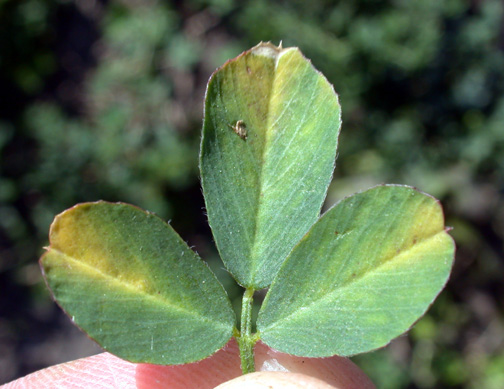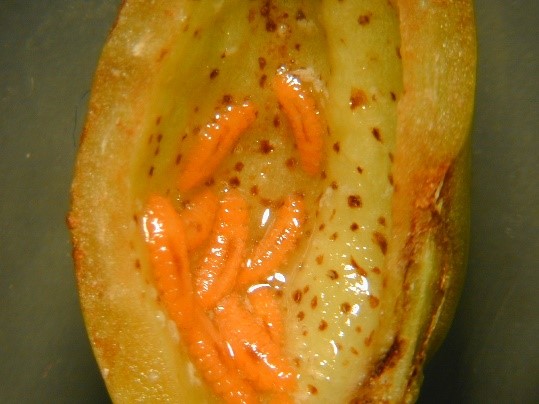Agriculture
UI Extension, Bannock County offers crop production research, assistance and programs for a number of subjects.
Annual Potato Conference
Plan to attend the annual potato conference. This website lists schedules, lodging in Pocatello and registration for the event. You can also find the proceedings of past potato conferences there.
Soil testing
The Analytical Sciences Laboratory at the University of Idaho can help you determine your soil's fertility. Bannock County has soil testing kits available through our office. We can walk you through the process of taking a soil sample of your property. The results will be returned to you and our horticulture educator to discuss options for your soil.
The lab also processes water quality samples and does plant analysis and veterinary toxicology.
UI Cereals Program
UI Extension cereal specialists do research and provide information on diseases that threaten our grain crops. Information on area cereal schools can be found here.
UI Forages
University of Idaho forage research programs and projects are found at this site. Alfalfa variety trial results as well as forage research results are posted as they are available.
Pesticide Licensing and Recertification
Many agricultural chemicals can only be used by trained individuals. Information on applying to become a certified pesticide user is found at the Idaho Department of Agriculture, including
- Application forms
- Signup information
- Annual re-certification seminar class schedules and locations
Evapotranspiration (ET) Charts
Proper irrigation scheduling is essential to high quality crops. The Agri-Met site lists water use charts for various crops in our area as well as for lawns and turf.
Horticulture
Tree seedlings from UI
You can order tree seedlings from the UI here that will be delivered to your door by UPS. This site also directs you to forest nursery research conducted at the University of Idaho.
Idaho Landscapes and Gardens
At this site you can get basic gardening information and more in depth information on fruit, vegetable and herb production. Lawn and turf management is also covered at this site. There are also links to insect, disease and weed management and control information.
Resource Catalog
University of Idaho has many publications to learn and improve your horticulture skills. These publications range from horticulture to cooking and canning.
Weeds
Control
Idaho has 70 species of plants on the noxious weed control list. By law these weeds must be controlled if you find them on your property. The Noxious Weed Control Guide deals with the chemical control of these weeds.
Identification
The Weed Science Society of America has set up a website to identify weeds you may have found. Links to common weed images as well as poisonous plant information and biological control of weeds are included.
Certified Hay
Producers may have hay certified as weed-free through their county's weed control supervisor. Idaho Weed Awareness maintains this site listing certified producers.

Potato Leafhoppers in Alfalfa
There are many insects that live and thrive in our alfalfa fields. Many of them are the beneficial insects that help us keep damaging insect populations low.
The potato leafhopper is one of the insects that can damage our alfalfa crops. These insects are quite small and you may need a magnifying glass to see them. They are yellow green and have a wide head with large eyes.

Scouting fields is essential in controlling this insect. Use a sweep net and check various locations in the field. Young alfalfa stands are the most easily damaged by this insect.
Potato Leafhopper damage can be confused with drought. Following potato leafhopper feeding plants will be stunted and roots will be underdeveloped. Leaf cupping will also be evident. All this may appear as drought.
There are other signs of damage that are more indicative of potato leafhopper. This insect feeds by inserting its mouth piece at the tip of the leaf and sucking plant juices. This insect injects a toxin into the plant while feeding, which interferes with transportation of fluids and nutrients in the leaves. This causes the leaf tip to yellow in a v shaped pattern at the leaf tip.

Insecticides can kill potato leafhopper, if populations are detected early. Leafhoppers can migrate from other fields after you have sprayed, so you may need to spray a couple times. If you did not detect this insect early and your field is already yellow and stunted the best thing to do is to mow your field. Then, if you detect hoppers on the regrowth, spray with insecticides.
If the crop is not at the stage you would like, such as 10% bloom, you should still cut it. A field of alfalfa that is heavily infested with these hoppers will not continue to grow and yield well. Therefore, it is best to cut if it is heavily damaged.
Penn State has developed a chart that shows what the threshold levels of hoppers are per sweep. It is based on plant height, cost of insecticide and the value of the hay. The chart only covers stands that are less than a foot tall. It is rarely a good economic decision to spray for leafhoppers when the crop is over a foot tall. It is recommended to just cut the stand at that height if it is damaged by these hoppers.
The potato leafhopper can be controlled if you take the proper steps and look for them early and monitor after each cutting.
Chokecherry Gall
Chokecherry is a very common fruit tree in southern Idaho. The fruit from these trees is used to make chokecherry jam or syrup. The taste of the berries is quite bitter, but once made into syrup it is delicious.
Chokecherry’s can be identified by the leaves. The leaves are oval and alternate along the stem, 3 to 10 cm long, with sharp teeth, and are pointed at the tip. The most distinguishing characteristic of the leaves are the small reddish glands near the base of the leaf blade.
If you are going to consume any type of berry you find, make sure you get it positively identified as many berries in our area are poisonous.


Some misshaped chokecherry berries have been found in our area. The berries were long and rather large and had been formed into a gall. When cut open, the gall was full of red maggots. These can not be used for food and will not make jam or syrup.
What has occurred here is that a small fly, a midge, has laid eggs on the tree. The eggs hatch into maggots, which burrow into the fruit of the chokecherry. Once inside, the feeding of these maggots caused the tree to form a gall in place of the fruit it would have otherwise produced. These large galls have no pit and are filled with liquid and maggots.
In order to control this midge you will need to remove all the galls prior to the flies hatching and destroy them and the maggots inside. The maggots will mature and hatch prior to the time when the unaffected berries mature. If you do not destroy the maggots early, they will drop to the ground, pupate and hatch out as adults ready to infest the tree the next year. Over the years the populations of this insect can increase to the point that most of the fruit is affected.
This year as you pick chokecherries, be on the look out for the chokecherry gall.
Resources
The University of Idaho Extension farm management team has put together a very useful website, Idaho AgBiz. This site is a great place to get information on agricultural business management. We receive many questions each day concerning the price of commodities like wheat and hay. We also get questions about what people should expect when setting up farm leases. Other questions revolve around the cost for various farming operations and what the cost of production is for commodities we grow in the area. Most of this type of information can be found on the Idaho AgBiz site.
One of the most useful publications on this site is the recently updated custom rates guide. This publication gives you up-to-date information on the costs of most agricultural operations such as cutting grain, baling hay or fertilizing.
The site also has the crop and livestock enterprise budgets. These worksheets assist producers in analyzing each of their enterprises like winter wheat, cow calf operations and potato production.
The site is also useful for checking on the crop and livestock markets so that we can market hay, calves, wheat and other commodities at the optimal time. The crop market tab has the Idaho weekly hay market report.
Another useful page the site is devoted to the various economic tools we have developed. One of the most useful tools is the machine cost calculator. This program assists you in determining the cost of operating various pieces of farm equipment and also determining how many acres will be needed to be cost effective.
The site also has the contact information for all the members of the team. Take some time and visit the site.
I recently attended a workshop taught by one of the professors I had in college. It was great to see him again and pick his brain concerning crop issues. His lecture was titled “Nutrient and Disease Interactions.” It was a great lecture that helped to broaden my thinking concerning soil fertility. In the past, I have noticed that many of my students recognize the effects of soil fertility on crop yield. They do not, however, realize what effects fertility, especially the elements we call micro-nutrients, have on all the other aspects of plant metabolism. I usually mention these effects in my classes, but do not go over them in detail. The lecture I mentioned above helped me to understand what is known and unknown about nutrition and plant health.
We know that our own health is in large part dependent on what we eat. For example, my doctor wants me to eat more vegetables and take fish oil tablets for better health. I agree with him that when I eat better I end up getting sick less. The same is true of plants.
Even the type of soil your plants are growing in affects plant health. Plants grown in soils containing high amounts of silicates will end up taking into their cells more silicates. This results in plant cells with higher than normal silicate levels. Plant cells with high silicates are much harder for disease organisms to attack. The silicates will act in some ways like the armor of a knight, protecting the plant from danger.
Most of us realize that excess nitrogen can increase plant susceptibility to disease, but we may not know why. One reason is that excess uptake of nitrogen by plants results in high amounts of amino acids and sugars in plant tissues. These are the things that attract disease organisms and can contribute to disease. The same trigger is in soil with potassium, but in reverse. Low levels of potassium can lead to high amino acid and sugar levels in plants which in turn may lead to disease. Potassium, calcium and boron levels are all related to fungal disease in plants. Other nutrients attract bacteria, virus and other disease organisms.
A book I recommend for those who want to study this topic in detail is “Mineral Nutrition and Plant Disease.” It is edited by Lawrence E. Datnoff, Wade H. Elmer and Don M. Huber and published by The American Phytopathological Society.










